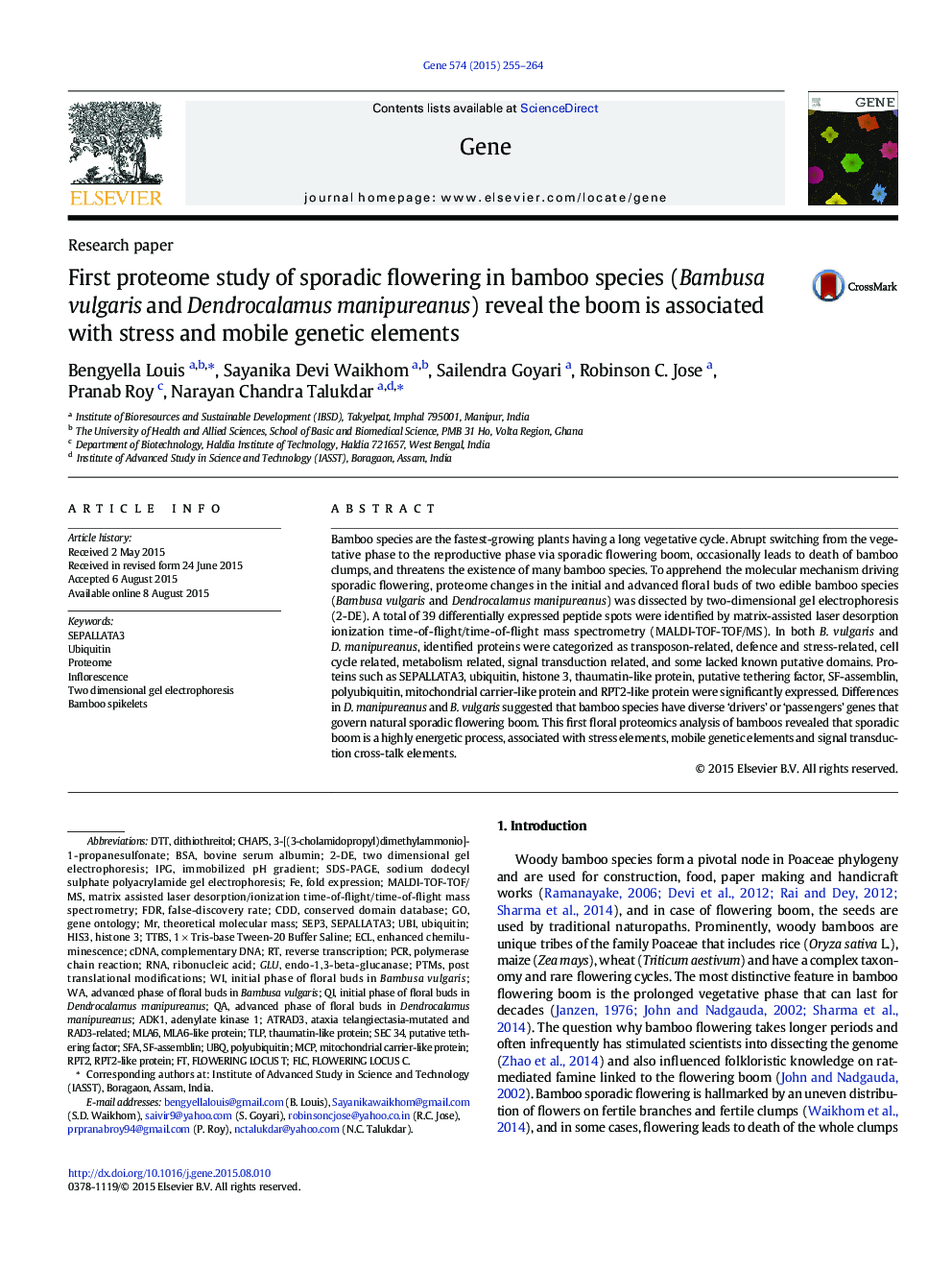| کد مقاله | کد نشریه | سال انتشار | مقاله انگلیسی | نسخه تمام متن |
|---|---|---|---|---|
| 2815354 | 1159866 | 2015 | 10 صفحه PDF | دانلود رایگان |

• Proteome changes in Dendrocalamus manipureanus and Bambusa vulgaris undergoing sporadic flowering boom were examined.
• Retrogenes and stress-related genes are associated with natural sporadic flowering boom.
• Differential expressions of SEPALLATA3, ubiquitin and histone 3 proteins were observed.
• Bamboo species have diverse ‘drivers’ or ‘passengers’ genes that govern sporadic flowering boom.
Bamboo species are the fastest-growing plants having a long vegetative cycle. Abrupt switching from the vegetative phase to the reproductive phase via sporadic flowering boom, occasionally leads to death of bamboo clumps, and threatens the existence of many bamboo species. To apprehend the molecular mechanism driving sporadic flowering, proteome changes in the initial and advanced floral buds of two edible bamboo species (Bambusa vulgaris and Dendrocalamus manipureanus) was dissected by two-dimensional gel electrophoresis (2-DE). A total of 39 differentially expressed peptide spots were identified by matrix-assisted laser desorption ionization time-of-flight/time-of-flight mass spectrometry (MALDI-TOF-TOF/MS). In both B. vulgaris and D. manipureanus, identified proteins were categorized as transposon-related, defence and stress-related, cell cycle related, metabolism related, signal transduction related, and some lacked known putative domains. Proteins such as SEPALLATA3, ubiquitin, histone 3, thaumatin-like protein, putative tethering factor, SF-assemblin, polyubiquitin, mitochondrial carrier-like protein and RPT2-like protein were significantly expressed. Differences in D. manipureanus and B. vulgaris suggested that bamboo species have diverse ‘drivers’ or ‘passengers’ genes that govern natural sporadic flowering boom. This first floral proteomics analysis of bamboos revealed that sporadic boom is a highly energetic process, associated with stress elements, mobile genetic elements and signal transduction cross-talk elements.
Figure optionsDownload high-quality image (337 K)Download as PowerPoint slide
Journal: Gene - Volume 574, Issue 2, 15 December 2015, Pages 255–264